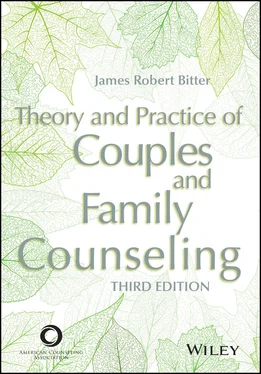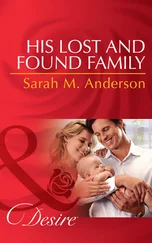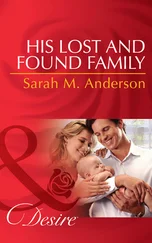James Robert Bitter - Theory and Practice of Couples and Family Counseling
Здесь есть возможность читать онлайн «James Robert Bitter - Theory and Practice of Couples and Family Counseling» — ознакомительный отрывок электронной книги совершенно бесплатно, а после прочтения отрывка купить полную версию. В некоторых случаях можно слушать аудио, скачать через торрент в формате fb2 и присутствует краткое содержание. Жанр: unrecognised, на английском языке. Описание произведения, (предисловие) а так же отзывы посетителей доступны на портале библиотеки ЛибКат.
- Название:Theory and Practice of Couples and Family Counseling
- Автор:
- Жанр:
- Год:неизвестен
- ISBN:нет данных
- Рейтинг книги:5 / 5. Голосов: 1
-
Избранное:Добавить в избранное
- Отзывы:
-
Ваша оценка:
- 100
- 1
- 2
- 3
- 4
- 5
Theory and Practice of Couples and Family Counseling: краткое содержание, описание и аннотация
Предлагаем к чтению аннотацию, описание, краткое содержание или предисловие (зависит от того, что написал сам автор книги «Theory and Practice of Couples and Family Counseling»). Если вы не нашли необходимую информацию о книге — напишите в комментариях, мы постараемся отыскать её.
Theory and Practice of Couples and Family Counseling — читать онлайн ознакомительный отрывок
Ниже представлен текст книги, разбитый по страницам. Система сохранения места последней прочитанной страницы, позволяет с удобством читать онлайн бесплатно книгу «Theory and Practice of Couples and Family Counseling», без необходимости каждый раз заново искать на чём Вы остановились. Поставьте закладку, и сможете в любой момент перейти на страницу, на которой закончили чтение.
Интервал:
Закладка:
As you read each chapter, consider how it applies to your own life, your own experiences, and your own worldview or perspectives. Can you see yourself approaching clients in the way that each of the models in this book suggests? Which techniques would you find comfortable, and which would be a stretch for you? What can you learn about your own family of origin from studying each of the theories in this book? Do they help you change any of the ways in which you approach family members now? What would it be like for you, as a client, to go see each of these family practitioners? And most important, what would it say about you as a person and as a professional to be part of a profession in family counseling?
The integration chapter presented at the end of the book relies in part on the development of different perspectives or lenses in counseling practice. These lenses (sometimes called metaframeworks ; Breunlin et al., 1997; Pinsof et al., 2018) allow you to consider a couple or family from many angles and to develop a more holistic, context-embedded view of the family and its members. Different approaches will help you assess and understand the purposes for which couples and families interact; their communication processes; sequences or patterns of interaction; the organization and rules that govern the family; the developmental stages of the family; and the gender, cultural, and societal issues that may be affecting client relationships. And all of them will have some impact on how you develop your own self-awareness.
I often think of multiple perspectives in the same way I might look at a tree—or any object for that matter. At a great distance, a tree looks almost flat, as if it were painted against some pastoral background on a canvas. As I approach the tree, it begins to take on shape and texture; I can see the cylindrical roundness of its trunk and limbs, the shape of the leaves, and even the texture of the bark. When I get close enough to touch the tree, I can feel the differences in these textures and imagine its history, how long it has been here, and what it has been through to attain the shape and posture that it currently holds. I can walk around the tree, and in some cases I can even crawl up into it. I can feel the muscles in my own body stretch and contract as I pull myself up from limb to limb. I can feel the wind blowing through the tree and over my face and hands. For a while, I am part of the tree, and still I am different and not part of the tree.
Although this metaphor works for me in terms of thinking about the many perspectives that can aid me in knowing and understanding a couple or family, it also invites me to consider my relationship to the tree in terms of change. Should I simply get to know the tree and then let it be? Do I think of it as a tree I just happened to encounter, or is it a tree placed in my care? Does it need pruning, and, if so, in what way? Does it need fertilizer, and, if so, what kind and how much and at what time in its development? Is it indigenous to the area in which it is rooted and in the company of other trees just like it? Or has the tree been transplanted from another place, another climate, or another context? Would I see this tree differently if I were different—for instance, if I were not a man but a woman, or if I were not oriented toward an individual tree but rather saw this tree in relation to all other trees in the area or that had ever been? Am I stretching this metaphor too far?
I wonder what metaphor for working with couples and families you could generate. I also wonder whether the metaphor will be the same or different when you finish reading the various theories presented in this book. Imagining is not such a bad way to start any journey. What do you imagine couples and family practice might be like?
The Systems Perspective
Perhaps the most difficult adjustment counselors living in Western cultures make is adopting a systems perspective, which goes against all of the values and experiences associated with individualism, autonomy, independence, and free choice. In the more collectivist cultures of Asia, interdependence, family embeddedness and connectedness, hierarchies of relationship, and multigenerational—even an-cestral—perspectives inform daily experiences and cultural views: A systems perspective seems normal there. Yet even in Western cultures—indeed, in all parts of the world—humans are born into families, and most people spend their lives in one form of family or another. It is in these families that individuals discover who they are. Families and systems are where people grow and develop, survive tragedies, and celebrate accomplishments and good times. Few of us do any of these things alone.
As we get older, we move into other systems (the school, the church, the community, and society in general). For most of us, the family still serves as a home base, the place to which we constantly return and from which we evaluate people and processes in the other systems we encounter. The often unspoken rules and routines of the family give us a sense of constancy and familiarity in life; hopefully, they also provide us with a feeling of safety and a sense of what it means to be functional and capable of handling the tasks and challenges of life.
Bioecological Systems Theory
A family is a system within many other systems, and even the system of the family has subsystems. In fact, one way of looking at individual human beings is to see the person as a system, a psycho-social-biological system with interacting parts and processes that constitute who they are. Many different developmental psychologists and social scientists have examined how we become uniquely human. The Russian developmental psychologist Lev Vygotsky (van der Veer, 2007), for example, believed that everything from thoughts and emotions to creativity develops in relationship to primary caregivers, a view that is supported by current neuroscience (Schore, 2012). The great field theorist Kurt Lewin (2010) examined the effects of leadership on personal and social effectiveness. In turn, these two pioneers in developmental/social psychology influenced the work of Urie Bronfenbrenner.
Bronfenbrenner (1979) is responsible for bringing a systems perspective to developmental psychology. Individuals, he noted, always live within systems, and these systems interact with one another as well as with the individual. You cannot understand the individual without understanding the influence of the ecological systems that surround the person.
Bronfenbrenner identified five environmental systems that make up the ecological system of the individual—and by extension, the collection of individuals that make up families. The first level he called the microsystem . The microsystem includes all environmental, social, and political groups that directly impact the individual, especially as a child during early development: the family (nuclear and extended), the school, the neighborhood, friends and peers, and sometimes religious affiliations. It can also include the person’s internal biology.
The mesosystem refers to the impact that occurs when microsystems interact. What is the effect on the child, for example, when the parents and the school system get into a fight? When a child’s peer group demands one level of response and the child’s family/religion/school demands something else, the mesosystem is in operation and has real effects on development.
Similarly, two different systems can have real effects on growth and development even if the person is not a member or participant in one of the systems. Say, for example, that a mother gets a promotion at work, and she is required to travel more and be away from home. The father drops out of the workforce to become a stay-at-home father, but he is not happy about it, and conflict between the couple ensues. Both parents change their patterns of interaction with the child. The impact on the child’s development is the result of what Bronfenbrenner called an exosystem , or a link between environmental systems that does not directly involve the child or person.
Читать дальшеИнтервал:
Закладка:
Похожие книги на «Theory and Practice of Couples and Family Counseling»
Представляем Вашему вниманию похожие книги на «Theory and Practice of Couples and Family Counseling» списком для выбора. Мы отобрали схожую по названию и смыслу литературу в надежде предоставить читателям больше вариантов отыскать новые, интересные, ещё непрочитанные произведения.
Обсуждение, отзывы о книге «Theory and Practice of Couples and Family Counseling» и просто собственные мнения читателей. Оставьте ваши комментарии, напишите, что Вы думаете о произведении, его смысле или главных героях. Укажите что конкретно понравилось, а что нет, и почему Вы так считаете.












